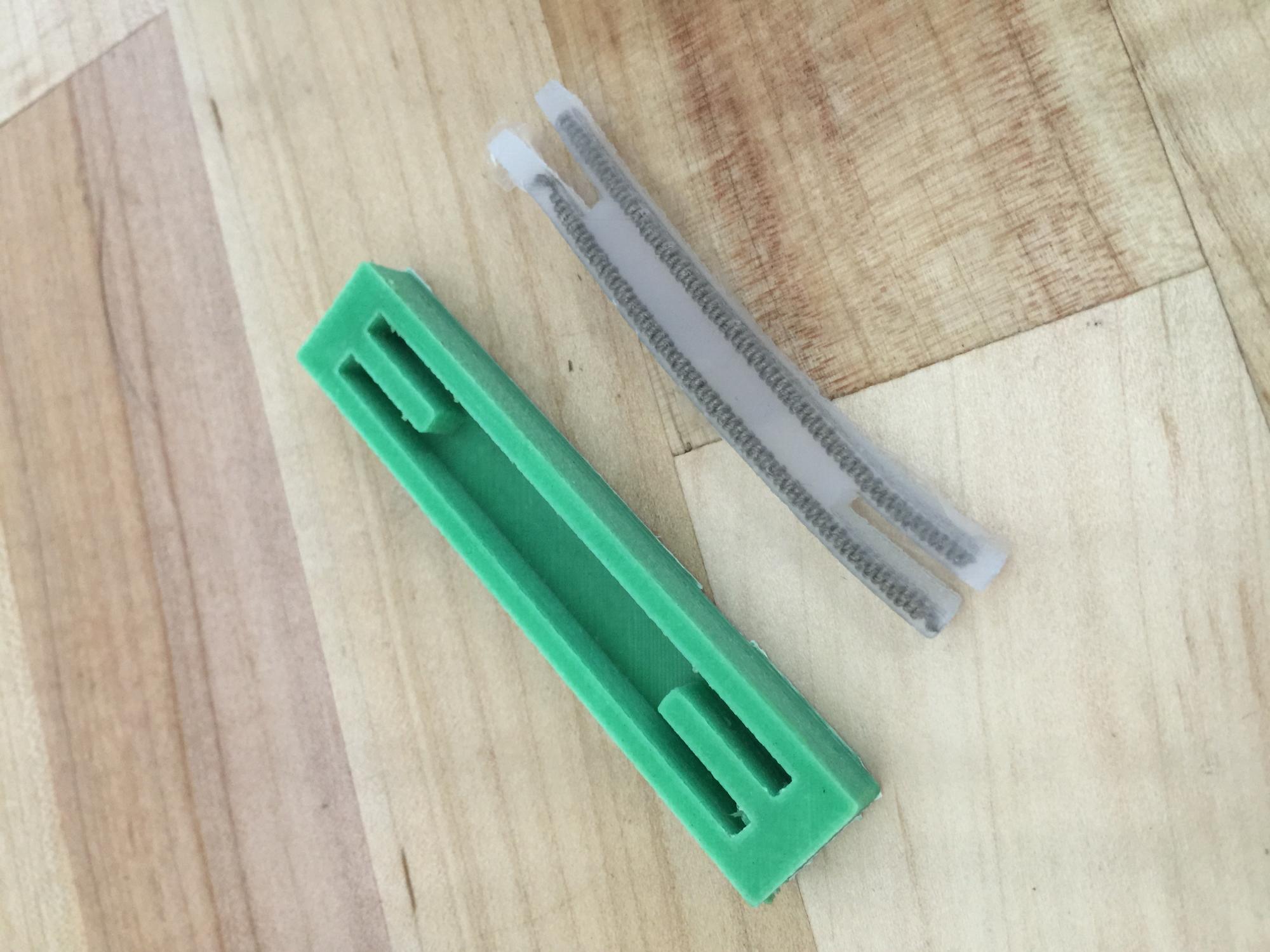The final iteration of the manipulator is a small rectangular piece of soft silicone with two extending nylon thread artificial muscles embedded symmetrically about its centerline. Upon application of a high enough voltage to one of the muscles, the muscle's extending motion strains the silicone and causes the manipulator to bend. Since the motion is a result of thermal expansion within the muscles and is driven by Joule heating, the degree of bending is related to the magnitude of voltage applied as well as the time during which it is applied, with higher voltages causing the manipulator to bend more quickly and longer times increasing the total deformation.
To gauge the success of the manipulator, its performance was to be compared to that of the PneuNets actuators. The goal was to produce a repeatable bending deformation qualitatively similar to what the pneumatically driven actuators had demonstrated. Unsuccessful iterations of the manipulator generally failed because the muscles burned out during testing; early on, the muscle would burn out before adequate deformation was achieved, but later, burnout would occur as a result of successive attempts to repeat the adequate bending motion.
Though nylon thread artificial muscles are capable of a superior strength-to-weight ratio to human muscles, the muscles used in the manipulator are so thin that the stiffness of even the softest available silicone is difficult to overcome. As a result, the final manipulator has dimensions much smaller than what was originally conceived. Additionally, the danger of burnout introduces an important constraint for the manipulator: a voltage cannot be applied for much time without allowing the muscle to cool, potentially complicating control. For example, to hold the manipulator in a certain degree of bending for a long time, a controller would have to cycle between on and off at some frequency to avoid overheating.
The iterative design process generally reflects a steady series of attempts to increase muscle strength while at the same time reducing total manipulator stiffness. Having met the original goal, future considerations tend toward conception of applications for demonstration of the manipulator's capabilities, such as robots that exhibit crawling or slithering motions.

